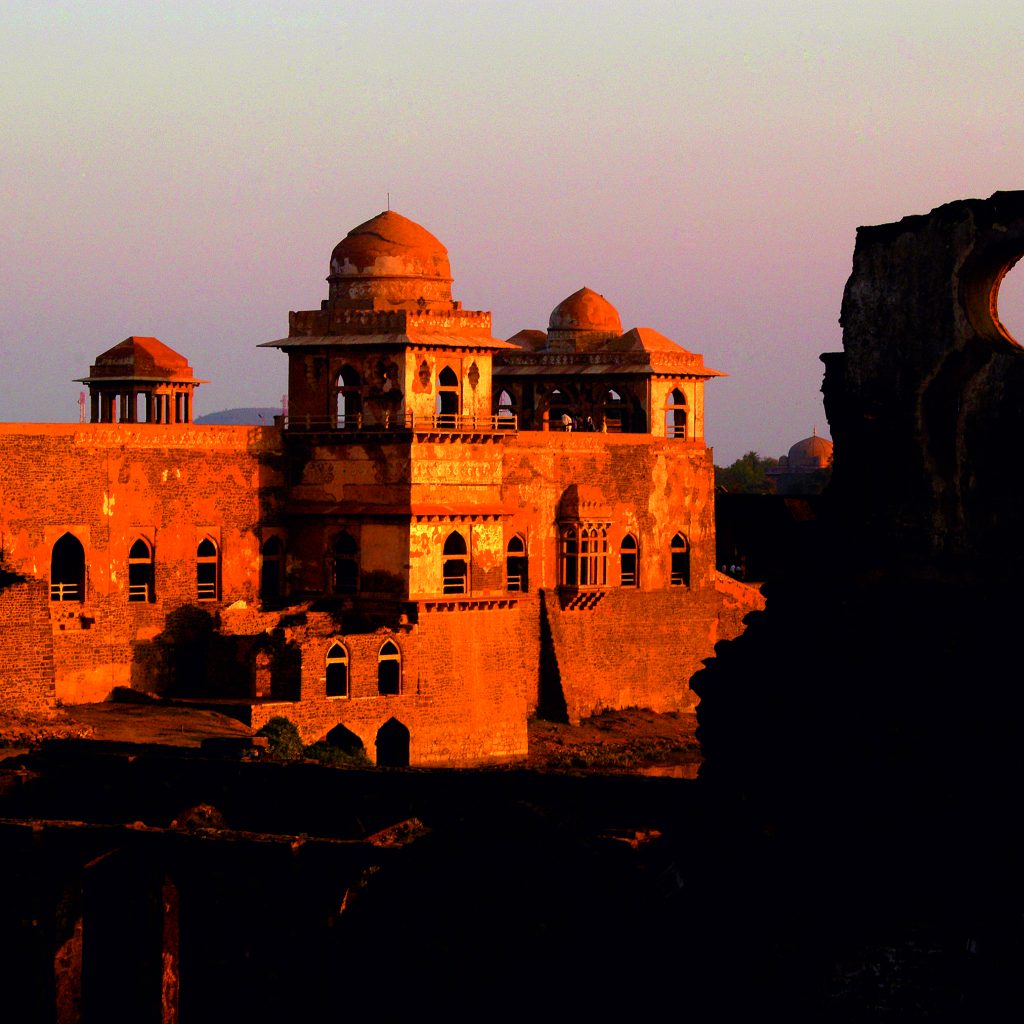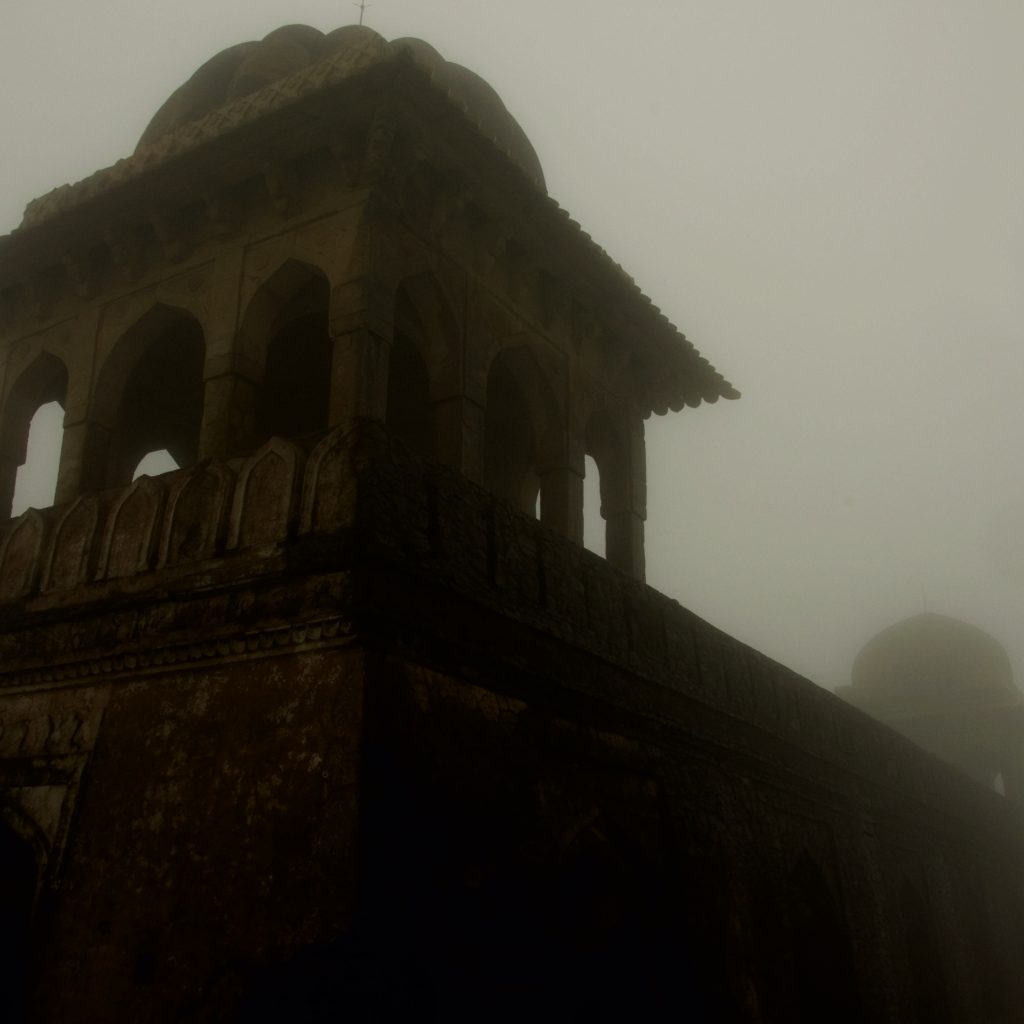Mandu is a celebration in stone, a testament to life, joy, and the love between poet-prince Baz Bahadur and his beautiful consort, Rani Roopmati. Perched along the Vindhya ranges at an altitude of 2,000 feet, Mandu boasts eclectic creations that combine the charming assertion of the Afghan mode with the great cultural heritage of the Turkish people.
Each of Mandu’s structures is an architectural gem, like the massive Jami Masjid and Hoshang Shah’s Tomb, believed to inspire the master builders of the Taj Mahal.
Floating over its reflection, the Jahaz Mahal in Mandu looks like a ship about to sail. For centuries, this stone and mortar ship stood floating over the twin lakes, silently witnessing Mandu’s long, rich, and varied history.
The grand palaces still resonate with royal romance, while the gateways (Darwaza) recount the history of imperial conquests.
The legendary love story of Baz Bahadur and Roopmati gave birth to the Roopmati Pavilion and Rewa Kund. The abandoned ruins of Hathi Mahal and Ashrafi Mahal have interesting stories associated with their existence. The intriguing site of the Bagh caves has the power to bridge events between bygone centuries.
Mandu offers myriad places to explore, from forts and palaces to gateways and temples. It’s a city adorned with breathtaking architectural jewels, and a stroll through the gallery of these monuments can leave you spellbound.
Food You Must Try in Mandu:
“Mandu ka Dal Paniya” is a must-try local delicacy while soaking in the legacy of the medieval capital of Malwa.
Dal Paniya is easily available in most restaurants and hotels and is also popular in other parts of Madhya Pradesh.
These paniyas are made using maize flour, salt, sugar powder, milk, and lukewarm water. The dough of the Paniyas is divided into small balls and then flattened slightly (like bati). Then these paniyas are cooked in a tandoor, giving them a smoky flavor when dipped in the dal. If you love spicy food, you must give this traditional Malva dish a try as it is super flavorful.
The city of Joy is also home to giant Baobab trees (Baobab is a tangy fruit), originally from Africa, whose seeds were gifted by the Caliphs of Egypt to the Sultans of Mandu in the 14th century. Locally it is called Khorasani Imli and is used to add tang in dal and curries. Also, the vendors in Mandu sell the gourd-like fruit after they have ripened in February.
Places to Visit in Mandu:
- Roopmati’s Pavilion: Originally built as an army observation post, this graceful structure on a hilltop offers a retreat with a view of Baz Bahadur’s palace and the Narmada river.
- Jahaz Mahal: A 120-meter-long palace built between two artificial lakes, resembling a royal pleasure craft.
- Hindola Mahal: An audience hall with sloping sidewalls, known as the ‘swinging palace.’
- Ashrafi Mahal: A palace of gold coins, conceived as an academic institution by Mahmud Shah Khilji.
- Baz Bahadur Palace: Built by Baz Bahadur in the early 16th century, featuring a spacious courtyard and high terraces.
- Darwazas (Gateways): Mandu is encircled by 12 gateways, with Delhi Darwaza being the main entrance.
- Hoshang Shah’s Tomb: India’s first marble edifice adorned with a magnificently proportioned dome.
- Jami Masjid: Inspired by the great mosque of Damascus, it’s conceived on a grand scale with a high plinth and a huge domed porch.
- Nilkanth Mahal: A Mughal-era palace close to the Nilkanth shrine, constructed by Shah Badgah Khan for Emperor Akbar’s Hindu wife.
Excursions from Mandu:
- Bagh Caves (90 km): 6th-century rock-cut caves.
- Jhabua (140 km): Known for the colourful Bhagoriya festival.
- Dhar (40 km): A medieval town and district headquarters.
- Burhanpur (220 km): Ancient gateway to south India.
- Maheshwar and Omkareshwar (40 km and 105 km): Spiritual trail to temple towns by the banks of river Narmada.
Things to Do in Mandu:
If you plan a trip around December during the Mandu festival, experience Mandu like never before. The Mandu Festival, a 5-day celebration of art, craft, music, food, and adventure, offers live concerts, adventure sports, cycling expeditions, glamping, hot air ballooning, and much more.
Best Time to Visit Mandu:
The best time to visit Mandu is between July and March when the average temperature is comfortable, ranging between 14°C (57°F) and 30°C (86°F). Summers can be hot, with temperatures rising to 46°C (115°F), while winters can dip below 5°C (41°F). Monsoons bring a sheen of fresh green, with rains lasting till mid-September.
How to Reach Mandu:
- By Air: Nearest airport is Ahilyabai Holkar Airport at Indore (95 km), connected to major cities.
- By Rail: Nearest railhead is Ratlam (130 km) or Indore, well-connected to Delhi and Mumbai.
- By Road: Well-connected by regular bus services from Indore and Dhar (40 km). Buses to Dhar are available frequently, taking around 3 hours.







